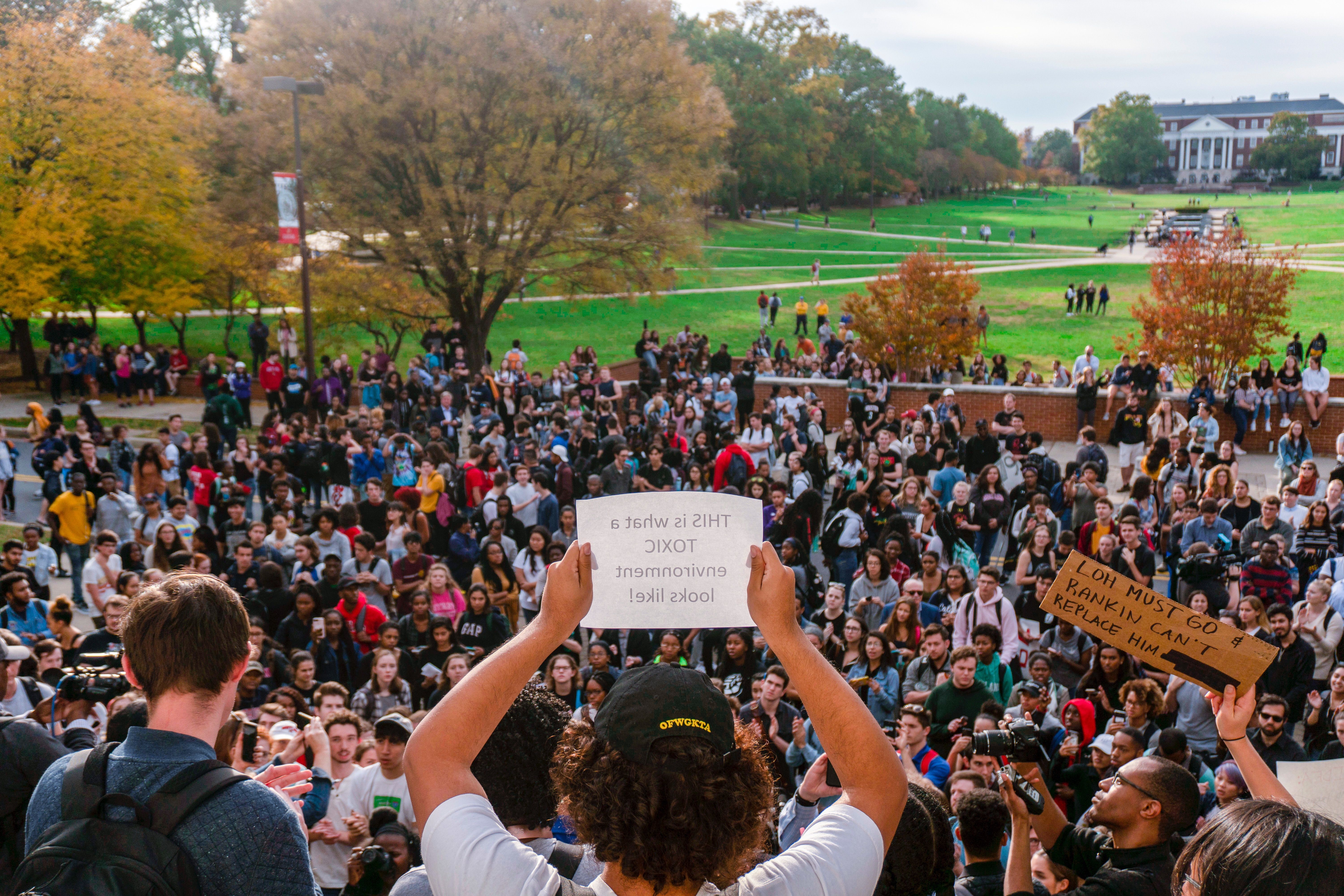Views expressed in opinion columns are the author’s own.
The University of Maryland is not its football team, nor its athletic department. The current administration may have directed this university down a path of questionable morality, but students and faculty were largely absent at the table when these decisions were made. So it’s especially bitter when these tragedies are made to color the entire student body, which has been one of the most outspoken groups in demanding justice for Jordan McNair.
In an Oct. 31 column in The Washington Post responding to the whirlwind of personnel changes, Sally Jenkins said this institution is not a university but “a canker sore with a couple of dormitories strapped to its suppurating side.” The anger beneath her diatribe is understandable and widely shared — including by many of the inhabitants of the canker sores’ dormitories.
Very few are proud of the university right now. But to throw the entirety of the institution under the bus is harmful. The students of this university have been angry and demanding answers since McNair’s death in June. Marginalized communities have been questioning the administration’s dedication to protecting black lives on this campus since 2nd Lt. Richard Collins’ killing in May 2017. Student outcry was a significant factor in the eventual firing of football coach DJ Durkin, whom Sally Jenkins described as “vain.”
This university is so much more than its football program. The student section was barren long before the death of a player at the hands of a victory-thirsty staff. Giveaways — one offering $10,000 to a lucky student should the Terps return a punt for a touchdown in the second half — have been introduced in recent years to boost student attendance. Our student body is diverse and has varied interests; it is the university administration who has chosen to dedicate an oversized portion of its resources to athletics. The portion of mandatory student fees going toward athletics is the largest, constituting 20 percent of 11 fee categories.
The football team is so thoroughly unlinked from the student experience at this university that the SGA introduced emergency legislation to support breaking up the $406 yearly athletic fee. The proposal would make optional the 75 percent of the fee funding student ticket fees. The legislation passed 34-0, with one abstention, marking an important step to divorce the university from its troubled athletic department.
McNair’s tragic death has forced the football program to be at the forefront of many students’ minds, for no reason other than one of our classmates being dead. The University of Maryland that Sally Jenkins described is the cowardly leadership of President Wallace Loh, the astonishing lack of humanity of the football program and the lofty distance the University System of Maryland Board of Regents creates between itself and the student body.
The University of Maryland that I know comprises the student groups that protest until the administration is forced to acknowledge its own shortcomings, and it is the student journalism that kept the students informed when the university leadership remained silent. I share Jenkins’ anger, but it is sorely misdirected. Just as Jeff Bezos is not representative of The Washington Post, this university’s atrocious leadership shouldn’t condemn its students and faculty.
Emily Maurer is a junior environmental policy major. She can be reached at emrosma@gmail.com.



